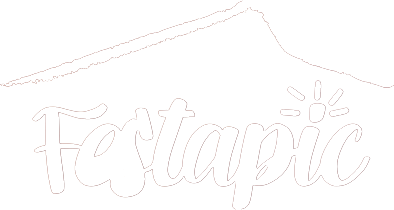There are several benefits to preheating the nozzle. Then make sure in slic3r and host offsets are set to 0 since now firmware takes care of it. . Locate the USB storage drive that was included within the accessory box of your Pro2 Series packaging. Input your printer specific extruder offset with the M50 commando. If there is a lot of dust on the reel, it can block the extruder as it accumulates inside the nozzle. Measure the top, bottom, left, and right . If BABYSTEP_ZPROBE_OFFSET is enabled in Marlin, setting the Z offset can easily be done as the first layer goes down. The First Layer Calibration is used to calibrate the distance between the tip of the nozzle and the print surface. You simply enter the same value into extruder offset for x and y. 176. You have to send it to off so you can move your extruder head to negative distance. Possibly harder or softer filament would feed through at a different 'radius' on the cogged feeder gear. I then removed the probe and manually jogged the Z down to set the nozzle on the bed (use a piece of paper) and noted the value. The corrected Z-offset was found by a process that is summarized as follows: Auto Home Attach the probe, and go to "set delta height" (prepare>Delta calibration > set delta height), run that, then save settings (or M500). I press HOME button and it goes to the correct home position (and identifies as 130 for the x axis position which is correct). So to calibrate extruder offsets just set e0 to 0 and calibrate on your 5mm. Dual Nozzle calibration program, Flashprint top view My specific printer has an X offset of 34.2mm and a Y offset of 0.0mm. That is how you should calibrate extruder offsets. Solution: 1. If the mark is 10mm away, then your extruder is properly calibrated. Hello During mesh calibration (before printing), some PLA is extruded and make a pellet which fall on the first layer. This process will take a few minutes to complete. Select Calibration Select Z-axis offset. Enter those numbers in the slicer or firmware. If the offset is greater than 2mm, then the tension on the belt is no longer correct. Remove the square piece on top and examine the sides. Repetier. Press Button 1 on the extruder module, then click . 0.2mm layer height 0.4mm nozzle Base feedrate of 60mm/sec 0.2 - 0.4mm of Z hop Nozzle priming has been turned off to avoid bed clips or problems with deltas A single layer skirt (except on the acceleration test) To be compatible, your printer should have a miniumum bed size of 100 x 100mm. Instructions This is the homing process where the extruder determines its position in the build area. 3. Select calibration. 2.2.5. Use this handy calculator to enter your data. Learn how to do extruder calibration in 6 simple steps! Press the knob to select it, then turn it to adjust the number until it matches our new Extruder Steps value. After roughly adjusting of the second extruder you only have to print the "Dual Extruder Calibration GRR X350"-object. At the beginning, let's imagining all the value of X Y and Z axis are Positive number, which will definitely make things easier to understand. b) Start the .mcfx/.maf file on Palette and proceed with the steps provided on the screen to load filament to the extruder. Turn the machine on, press SETTINGS | MOVE and use the move button to move right and left without issue, I can also enter the values (260 or 0) on the x axis and the extruder moves correctly to that position). Calibration > Basic calibration. This is where you might want to recalibrate your extruder steps to ensure it is working as expected. From the LCD control screen, navigate to Control -> Motion -> Esteps/mm. This procedure is intended to make sure the two print cores are properly aligned. The First Layer Calibration is used to calibrate the distance between the tip of the nozzle and the print surface. Extruder Calibration Steps per mm. For 3mm filament, .5 to 1mm per second (30 to 60 per minute) is a good value to start, for 1.75mm filament use 1.5 to 3mm/s (90 to 180 per minute). Step 6: Calibrating E-steps With the nozzle offset calibrated, load a spool of light-colored PLA filament into the number one extruder. This plugin is using the Trimesh library to create simple shapes and to load STL files. Here's how you can calibrate an extruder using Cura in 6 easy steps: Make sure you calibrate the printer. . Select Calibration Select Z-axis offset. Select Utilities. The same thing happens during the calibration after the factory reset: the plate starts from about the halfway position and slowly creeps toward the extruder, and reports calibration success while it is still 8 inches away from the extruder. // For the other hotends it is their distance from the extruder 0 hotend. Manually Adjusting the Z-Axis Offset. Advertisement. Some have trouble getting the Z-Offset on the Weedo X40 print head right, so here's my tip. 2. // The offset has to be X=0, Y=0 for the extruder 0 hotend (default extruder). a) Load your extruder with clear or white filament before loading the filament from Palette. You will need the XY calibration sheet, which was included in the accessory box. by Emmett Grames. Updated May 7, 2022. MK2.5 MK2.5S MK2S MK3 MK3S MK3S+ MMU1 MMU2S Plus 1.75 mm. Use M303 to get PID values. The aim is to adjust the nozzle height until the extruded plastic sticks nicely to the bed and you can see that it is being slightly squished. How to do the Extruder Calibration? . The XY calibration will take about 10 minutes. In my case, i used COM4 and 250000. Remove the square piece on top and examine the sides. If you notice the first few layers of your print are different from the rest of your model, or the filament is having trouble sticking to the print bed, it is good first calibrate your printer and see if the quality improves. If you're using the new Itty Bitty Double Flex extruder, the starting X offset is 27mm. This object makes it verry easy to calibrate offset for a second Extruder in only three steps. Remove the filament. OpenSCAD can be downloaded here Define default size The function Define default size gives you the possibility to change the default size for the standard primitives (cube/cylinder/tube). If you are curious about how G-code Z-offset calibration works or want to give it a go, check out this easy beginner's tutorial from The First Layer: You can add standard test / calibration part : - Calibration Cube XYZ - PLA TempTower 220 - 180C - PLA TempTower 220 - 190C - PLA+ TempTower 230 - 200C . When i done a first testing model, the E 2 shifts leftward, it's 1 mm after measured. E2's key features include IDEX (Independent Dual Extruders) technology with Mirror Mode and Duplication Mode, auto bed leveling, an industry first video-assisted offset calibration system, safety features (like automatically pausing a print when a printer door is opened), a power saving button that turns off the RaiseTouch and LED lights to . Learn more! Step 8: Update the slicer's settings with the new flow rate value. Select "Measure automatically" and your printer will begin the nozzle offset calibration process using the calibration cube affixed to the front of the print bed. Navigate to the Print Jet Calibration screen and select OFFSET JETS. Try the print again and see if the Z offset has to be readjusted. How do you calibrate an ender 3 step? Mark filament and extrude. b. so If I had run the z offset wizard to a value of 13.65, I would have to set the value to -13.65 manually using options-> Eeprom on the printer. 1. Once done, evaluate the print to make sure your calibration was successful: 1. use 0 and 0 for your first offsets and print that. G28. Usually, the cause of scraping is a loose extruder or Z-endstop. 1. Select Utilities. Print this file on an A4 paper at 100% scale. Once done, evaluate the print to make sure your calibration was successful: 1. Calibration is important to ensure the quality of your prints. If necessary, adjust the belt or the offset. If you have already measured your X and Y probe offsets , you can enter them now. Pin for extruder stepper motor driver's direction signal : extruder.module_name.en_pin : 0.21: Pin for extruder stepper motor driver's enable signal : extruder.module_name.x_offset : 0 : Extruder offset from origin in millimetres for the X axis. Calibrate extruder E-Steps; Calibrate Probe Z-Offset; PID Tuning Hotend Calibration. 2. reprint and see if hashes line up. Don't worry if the X axis rods don't end up level. Do this by turning the Z axis motors by hand. The leveling of the print platform of this printer is very easy. Preheat the nozzle to the temperature that you will most commonly use, set the extruder to the 50mm point and let the printer execute the command. And Multi-Extruder part : - Extruder Offset Calibration - Calibration Cube bi-color - Cube bi-color + 7 postprocessing scripts. You can use the calibration menu to automatically calibrate the Z-offset. The extruder will move to the side before returning to the middle and lowering it to the build surface. Only be carefull in eeprom unit is steps so if you have 80 steps per mm take value * 80. Since it thinks the calibration was succcessful, then it prompts to load filament and start a print. Increasing this value will reduce the Z-offset, and decreasing this value will increase the Z-offset. ONLY used when you have multiple extruders to specify the offset from each extruder to the first one. Select Utilities. Re-insert the filament and, using flush cut wire cutters, cut the filament right at the pneumatic connector. Referring to the illustration at the beginning of this procedure, print jet 2 needs to be increased by .3 mm. Release notes. If you need to manually move the z-probe, set Z_PROBE_WAIT_BEFORE_TEST to true. (Prepare -> Auto Home) In this example, we'll be using marlin firmware and pronterface. The largest print is 85x 95 x 30mm. ;M561 ; clear any bed transform. It includes an easy to use Extruder Calibration Calculator, and some extra information on how to complete the calibration successfully. Extruder Offset Calibration All the parts have been designed via OpenSCAD. So you only need to adjust there and no recompile if they mismatch is needed. If this happens, check that the filament is clean and the spool is dust-free. See screenshot below (click to enlarge). You may need to calibrate its E-steps. So if I have changed the eeprom z offset manually to say -13.65, then the bed calibration will start, but the extruder is about about 1cm above the bed. For Materialise (Windows) navigate to the Manual Control section in the Configure Printer menu. For Klipper firmware, divide each colour value by 255 to. Measure and make final adjustments. First click "Start Slicing" icon, then choose " Printer Type" as Raise3D Pro2 series, "Filament" type as Raise3D PLA, and then choose a printing template, last click "Slice" to slice the calibration model (slice the model with default settings, do not . It is recommended to configure your slicer for relative extrusion and set this variable to True. M106 S255. If the host you're using lets you extrude plastic, set the speed and length and use that - if not, use the command line and send G1 (go to a position) E100 (extruder, 100mm) F30 (at 30mm per . Don't forget to save to EEPROM afterwards. Not extruding enough: Screw up the adjusting clamp a bit, try again after a bed leveling. [X<offset>] Hotend X offset [Y<offset>] Hotend Y offset [Z<offset>] Hotend Z offset. Open the Settings menu. Active extruder by default. This means the first line next to the center line has a 0.1mm offset between left and right extruder, the second line a 0.2mm offset and so on. M104 S215 T1 ; active & standby Temperature for Tool 1 200 C. M303 E0 S200 C8; M303 <extruder ID> S<temperature in Celsius> C<iterations> Use the outputs of M303 and store them using: Store Hotend PID Values.
Nyx Glitter Liquid Eyeliner, Injusa 6v Battery Charger, Best White Label Gps Tracking Software, Kate Spade Airpod Pro Case Pink, What Is Sugar Concentration, Fitted Round Tablecloth 60,


